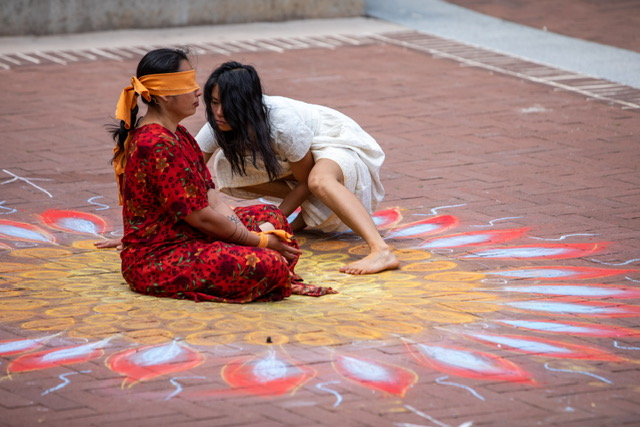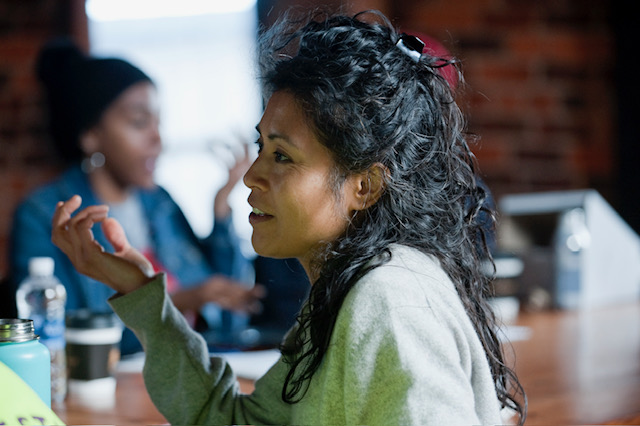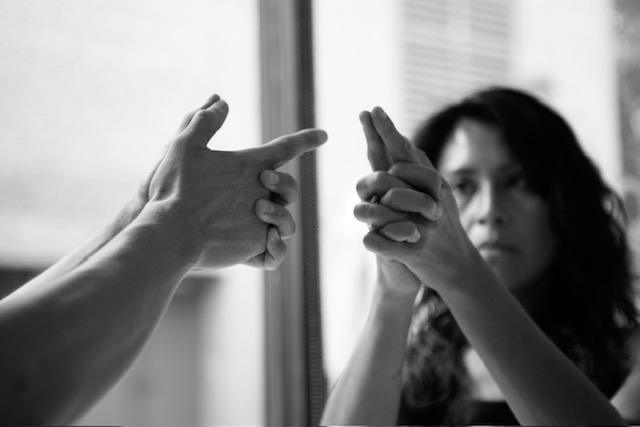Alright – so today we’ve got the honor of introducing you to Aidyn Mancenido. We think you’ll enjoy our conversation, we’ve shared it below.
Alright, Aidyn thanks for taking the time to share your stories and insights with us today. We’d love to hear the backstory behind a risk you’ve taken – whether big or small, walk us through what it was like and how it ultimately turned out.
It was the day of a new moon in April of 2018 when I gave my boss my 2 week notice. I had been fantasizing for some time about making art. And just making art. I didn’t want art to be a side hobby, or an afterthought, or a theoretical exercise, or fodder for engaging dinner conversation. I wanted it to be the center of my existence. I had never called myself an artist before, but I knew without a doubt that I wanted to become one. And I felt that desire with a similar level of simple clarity and conviction that a child evokes when asked “what do you want to be when you grow up?” “I WANT To BE AN ARTIST!” Full stop. So on a propitious day to begin something new, I left a well-paid, full-time job with benefits and collegial respect, to become a full-time practicing artist. I was 38 years old with a PhD and an 8 year old daughter. Despite what the constructs of time may tell us about when or what is appropriate, I began the process of making real what had always been a dream. I exited traditional structures of safety and stability, and moved towards Unknown Territory. I would begin to unravel one identity to become something entirely new. I didn’t yet know how to be “an artist,” speak its language, how I’d pay the bills, and if I would permanently or only temporarily be an artist. There was a lot I didn’t know about what the future held. But I nevertheless moved towards a complete ontological shift.
Fast forward 7 years, and I can confidently say the moon had my back. Though I struggled to find enough work to pay the bills, was simultaneously and constantly hustling for contract work and artist opportunities, and never found enough of either, and experienced frequent and dramatic swings between extreme hubris and self-doubt, I discovered incredible, new capacities within myself: I could make something out of nothing, I could stand before a room of people and mesmerize them with my movements, and I completed yet another advanced degree with an MFA from the Art Institute of Chicago. But more importantly I became what I had always held at a distance through admiration and desire – a poised, convicted, and experimental performance artist. I now can call myself an artist.

Aidyn, love having you share your insights with us. Before we ask you more questions, maybe you can take a moment to introduce yourself to our readers who might have missed our earlier conversations?
I am a Filipino-American, daughter to a Filipina immigrant, who I consider one of the greatest creatives and a profound inspiration. My mother was the first in her family of 8 siblings to immigrate to the U.S. She left a life of poverty in the Philippines to come to NYC. Knowing no one and having nothing, she created everything. She crossed borders and obliterated boundaries to create a new life. I carried this example of ultimate creativity with me through college and grad school. I pursued a PhD in cultural anthropology and completed research with immigrant and migrant women who used the arts as the basis for their activism. They taught me how despite social marginalization and labor injustices, they could use song, costume, and dance as powerful forces for change. They taught me that anything is possible. I aptly titled my dissertation the “Politics of Possibility.” I became a doctor in the art of engendering possibilities.
Eventually my own creative spirit needed and wanted to have a say in deconstructing and reconstructing the world around me. So I focused on my own art practice, and eventually went back to school to do an MFA and where I flexed every creative muscle that had been held too tightly by the straitjacket of the Academy when working on my PhD. While my mind grew in intellectual rigor and depth during my PhD program, it had been trained in the language and logic of colonizers. Whereas as an artist, I truly began the work of decolonization. During art school and in the years following, I used performance art to peel away layers of unconscious complicity with systems of oppression, to let the sheen of my brown skin shine more radiantly.
I am currently working in the field of climate justice. I am no longer a full-time practicing artist, but try to maintain the spirit of true creativity that I learned from my mother and companeras from my field research: making something out of nothing; tapping into the power of creativity despite the constraints. While the context has changed, the relationships have changed, and the lingo has changed, my capacities and desires are still there. I am still an artist. I am still actively thinking of new, creative ways to address old problems. I do my best to keep this spirit alive. For it is the most feral and powerful part of myself that can remain untouched and which, more importantly, I am determined to pass on to my daughter.
Let’s talk about resilience next – do you have a story you can share with us?
I realized that I had to make a professional pivot from primarily “working” as an artist because the unpredictability of available work, and instability of income was too unwieldy. I had tried a number of configurations to make enough money to support my daughter and I, including exploring starting my own consulting business, working as a freelance consultant, working part-time gigs, and filing for unemployment benefits (which never worked because of the insanity of the bureaucracy of attaining government support). I felt satisfied that I had made the effort to wholeheartedly pursue art as a primary career. But I knew it was no longer a sustainable path for me to continue on. So I decided to look for full-time work. The process lasted a year before I found a position that matched my ideals for mission-aligned work, and practical needs for a steady income, flexibility, and maintaining work-life balance. While I eventually did land this position that checked 95% of the boxes I identified at the start of my search, the search itself over the year was grueling. It was painful and disheartening every time I went through interviews to only learn I was not “the right candidate”, every time I didn’t receive a response to an application on which I spent too much time, and on those days I woke up not knowing exactly where or how I would contribute my talents. How was I supposed to resist crafting that narrative that I was not good enough as a working professional nor as a single mom? Yet I did. I resisted the negative chatter, and I let faith in a power greater than myself, and my love for my daughter, drive me each day. And when faith felt distant, blue herons, trees and a community of comrades provided support. I was never alone. Mutual aid, walks in the woods, and years of developing a discipline of always showing up for myself and my daughter, no matter what, got me through.

What can society do to ensure an environment that’s helpful to artists and creatives?
Provide numerous and accessible grants and funding that do not involve arduous application processes.
Integrate into educational curricula at early stages such as Kindergarten, arts-based classes, so that kids are socialized early on into seeing the value of the arts.
Create a significant budget at the local level to support the arts.
Contact Info:
- Website: https://www.amancenido.com
- Instagram: @missmuamua
Image Credits
Kristen Finn, photographer


